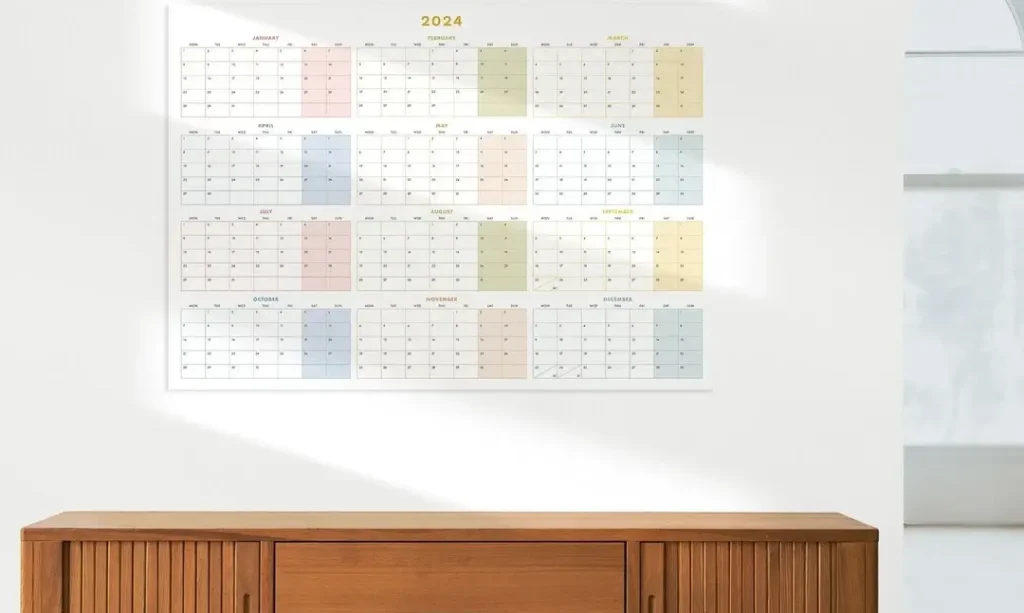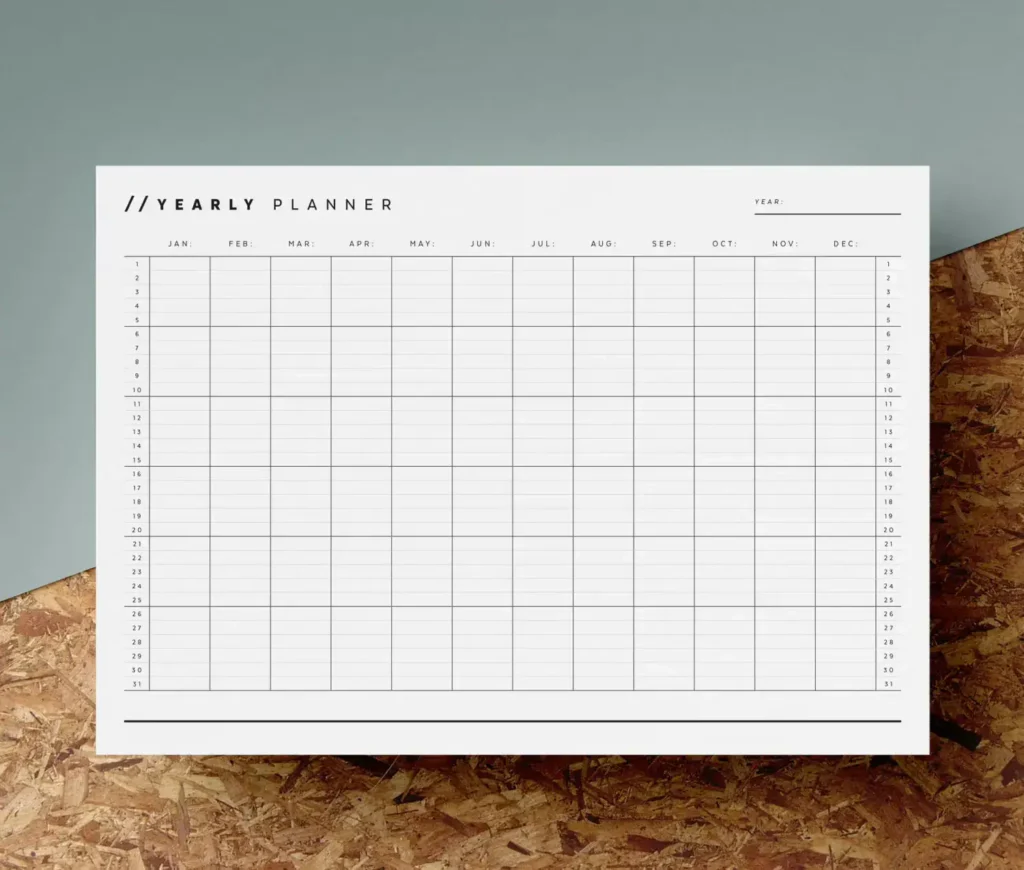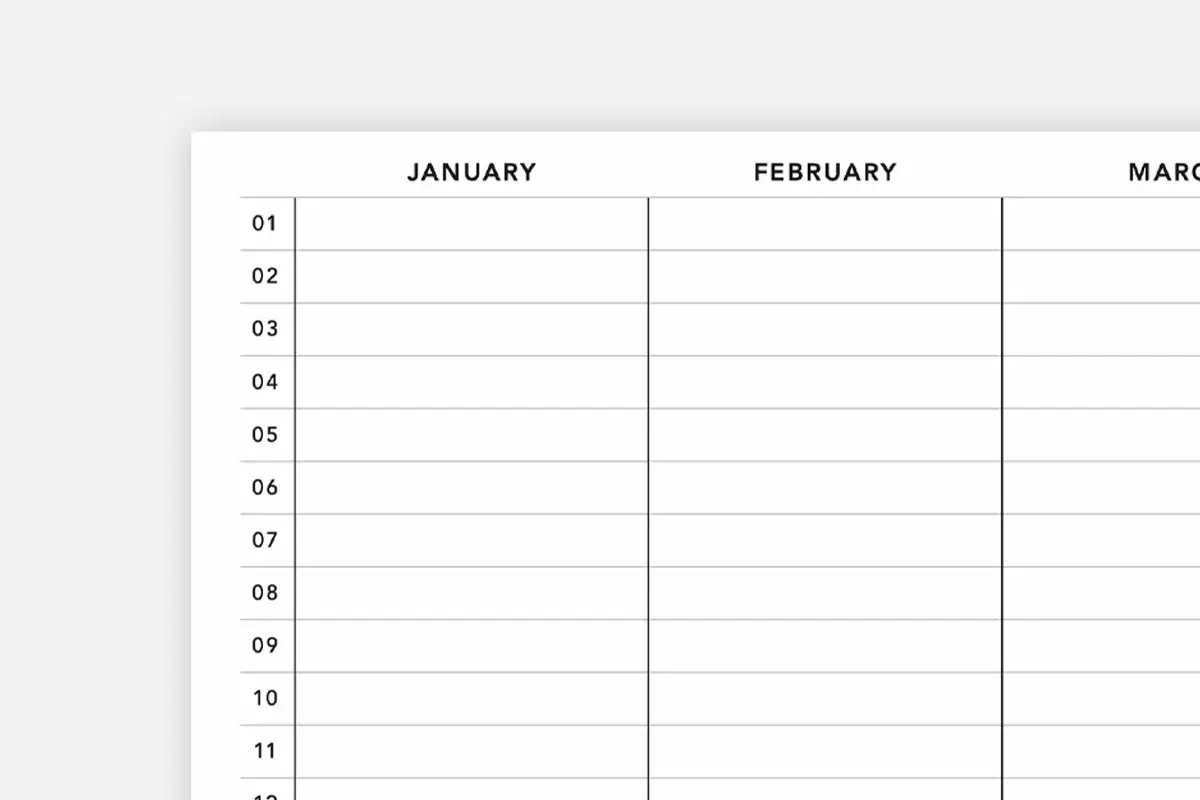Are you ready to make the most out of your year? Knowing how many weeks are in a year and strategically planning them can make a significant difference in your productivity and success. In this article, we will explore the concept of yearly planning and share some tips on how to make every week count. First, let’s get the facts straight. A year consists of 52 weeks, or precisely 365.24 days.
Understanding this allows us to break down our goals and allocate the necessary time for each task or project. But it’s not just about the numbers; it’s about making the most out of those weeks. To ensure we maximize our time, we need a solid plan. This involves setting clear objectives, prioritizing tasks, and creating a schedule that allows for flexibility. Taking into account holidays, vacations, and other personal commitments is key to striking a balance, both personally and professionally. With proper yearly planning, we can avoid the pitfalls of procrastination and better focus on achieving our goals. So, let’s dive into the world of yearly planning and discover effective strategies to make every week count.
Understanding the Concept of a Calendar Year
The concept of a calendar year is quite simple yet profound. It is the time from January 1 to December 31, spanning 365 days in most years, and 366 days in what we call a leap year. The calendar year, as we know it today, is based on the Gregorian calendar, which was introduced by Pope Gregory XIII in 1582. This system was designed to keep the date of the spring equinox close to March 21st, ensuring a consistent and predictable pattern of seasons.
Understanding the concept of a calendar year is essential for effective planning. By considering the year as a whole, we can effectively allocate our time, plan for significant events and holidays, and set realistic goals. This perspective also helps us to appreciate the cyclical nature of time, reminding us that each year offers fresh opportunities for growth and improvement.
However, recognizing that a year is not just a linear progression of days, but a cycle of seasons, can add a deeper dimension to our planning. Each season brings its own energy, opportunities, and challenges. By aligning our plans with the rhythms of the natural world, we can work more efficiently and sustainably.

How Many Weeks Are There in a Year?
It might seem like a straightforward question, but understanding how many weeks there are in a year can be surprisingly tricky. In the Gregorian calendar, a year is divided into 52 weeks and 1 or 2 extra days. While a standard year consists of 365 days, which equates to 52 weeks and 1 day, a leap year has 366 days, amounting to 52 weeks and 2 days.
The concept of a week, consisting of seven days, is a human invention and doesn’t perfectly align with the natural cycles of the Earth’s orbit around the Sun. This is why we end up with those extra days each year. However, for the purposes of planning, it’s often practical to consider a year as consisting of 52 weeks.
Knowing exactly how many weeks there are in a year plays a crucial role in planning. It helps us to break down our goals into manageable chunks, allocate time for each task or project, and ensure our plans are realistic and achievable.
Importance of Yearly Planning
Yearly planning is an essential tool for success in any endeavor. It provides a roadmap for your journey, outlining the steps you need to take to reach your destination. Without a yearly plan, you risk drifting aimlessly, wasting precious time and energy on unimportant tasks while neglecting your most important goals.
Yearly planning helps to prioritize your time and resources, focusing on what truly matters to you. It allows you to see the big picture, enabling you to make strategic decisions about your path forward. A well-crafted yearly plan can serve as a powerful motivation tool, providing a clear vision of your desired future that inspires and propels you towards your goals.
Moreover, a yearly plan can also serve as a valuable tool for self-reflection. By reviewing your plan at the end of the year, you can evaluate your progress, learn from your mistakes, and gain insights for future planning. All of these benefits make yearly planning a worthwhile investment of your time and energy.
Setting Goals for the Year
Goal setting is a vital part of yearly planning. Without clear, well-defined goals, it’s easy to lose sight of what you’re working towards and become overwhelmed by the day-to-day demands of life. Goals provide focus, direction, and a sense of purpose, making it easier to stay motivated and committed to your plan.
When setting your goals for the year, it’s crucial to ensure they are SMART: Specific, Measurable, Achievable, Relevant, and Time-bound. These criteria ensure your goals are clear, realistic, and aligned with your values and priorities. It’s also helpful to break down your annual goals into quarterly, monthly, or weekly targets, making them more manageable and less intimidating.
Remember, your goals should inspire and motivate you, not cause stress or anxiety. If a goal feels too ambitious or unrealistic, don’t hesitate to adjust it. Your yearly plan should be a living document, flexible enough to adapt to changes in your circumstances, priorities, or perspectives.
Breaking Down Goals into Actionable Tasks
Once you’ve set your goals for the year, the next step is to break them down into actionable tasks. This process involves identifying the specific actions you need to take to achieve each goal. These tasks should be concrete, measurable, and time-bound, providing a clear roadmap for your journey towards your goals.
Breaking down your goals into actionable tasks can make your yearly plan more manageable and less overwhelming. Each task represents a small step towards your goal, making it easier to maintain momentum and stay motivated. This approach also allows you to track your progress more effectively, providing a sense of achievement as you tick off each task.
Remember, the key to successful planning is flexibility. Don’t be afraid to adjust your tasks as necessary, based on your progress, circumstances, or changing priorities. The goal is not to stick rigidly to your plan, but to use it as a guide that helps you stay focused and productive throughout the year.
Creating a Yearly Planning Calendar
A yearly planning calendar is a visual representation of your plan for the year. It allows you to see at a glance when you’ve scheduled each task, helping you to manage your time effectively and ensure you’re making steady progress towards your goals. The format of your calendar can be digital or paper-based, depending on your preference.
When creating your yearly planning calendar, it’s important to consider all aspects of your life, not just your work or career goals. Be sure to include time for rest, recreation, and personal development. Also, remember to factor in holidays, vacations, and other special events that might affect your schedule.
A well-designed yearly planning calendar can be a powerful tool for productivity and success. By providing a clear, visual overview of your year, it can help you to stay organized, manage your time effectively, and maintain a healthy balance between work and leisure.

Maximizing Productivity and Efficiency Throughout the Year
Yearly planning is not just about setting goals and scheduling tasks. It’s also about maximizing your productivity and efficiency throughout the year on lunatogel login. This involves developing strategies to manage your time, energy, and resources effectively, helping you to make the most of every week.
One effective strategy for maximizing productivity is the concept of time blocking. This involves scheduling specific blocks of time for different tasks or activities, allowing you to focus fully on one thing at a time. Another strategy is the use of productivity tools and apps, which can help you to stay organized, track your progress, and manage your tasks more effectively.
Remember, productivity is not just about working harder, but also about working smarter. It’s important to take regular breaks, stay hydrated, and maintain a healthy lifestyle. By taking care of your physical and mental health, you can enhance your productivity and efficiency, making your yearly plan more achievable and enjoyable.
Reviewing and Adjusting Your Yearly Plan
No matter how well you plan, it’s inevitable that unexpected events will occur, priorities will shift, and goals may need to be adjusted. That’s why it’s essential to regularly review your yearly plan and make adjustments as necessary. This ensures your plan stays relevant, realistic, and aligned with your current circumstances and priorities.
Reviewing your yearly plan can also provide valuable insights into your progress and productivity. By reflecting on what’s working and what’s not, you can identify areas for improvement and make necessary changes. This process of continuous learning and adaptation is key to successful planning and achieving your goals.
Remember, the purpose of your yearly plan is to guide and support you, not to constrain you. Don’t be afraid to make changes, big or small, if they serve your wellbeing, happiness, and success. After all, the ultimate goal of planning is to enhance your life, not to control it.
Celebrating Milestones and Achievements
One of the most rewarding aspects of yearly planning is the opportunity to celebrate your milestones and achievements. These celebrations are not just enjoyable, but also vital for maintaining motivation and boosting your self-esteem. They provide tangible proof of your progress, reinforcing your belief in your abilities and your commitment to your goals.
Celebrating your achievements can be as simple as taking a moment to acknowledge your success, sharing your achievement with others, or rewarding yourself with a treat or special experience. It’s also a good idea to record your achievements in your yearly plan, providing a visual reminder of your progress and serving as motivation for future goals.
Remember, every achievement, no matter how small, is worthy of celebration. Even if you haven’t reached your ultimate goal, every step forward is a success in its own right. So, don’t wait until the end of the year to celebrate – make it a regular part of your planning process.
Making the Most of Every Week in a Year
In conclusion, yearly planning is a powerful tool for success, productivity, and personal growth. By understanding how many weeks are in a year and strategically planning them, you can make the most of your time, maximize your productivity, and achieve your goals.
Remember, the key to successful planning is flexibility, regular review, and celebration of achievements. With these strategies in mind, you can create a yearly plan that supports you in making the most of every week in a year.
So, as you embark on your journey of yearly planning, remember this: every week is a fresh opportunity for growth, learning, and achievement. Make them count!
Also read: Mochi Bites: Exploring the Irresistible Japanese Delicacy
























